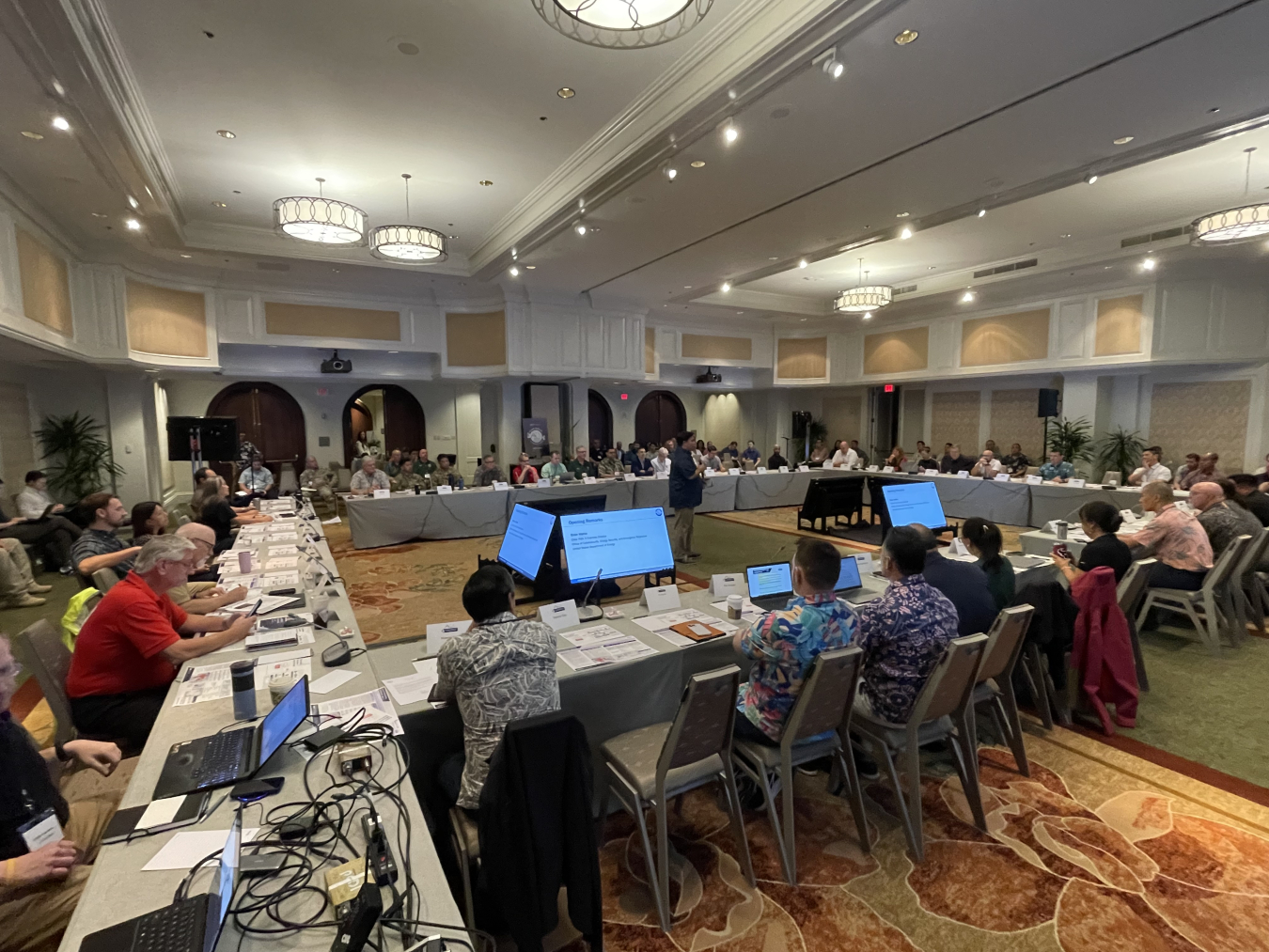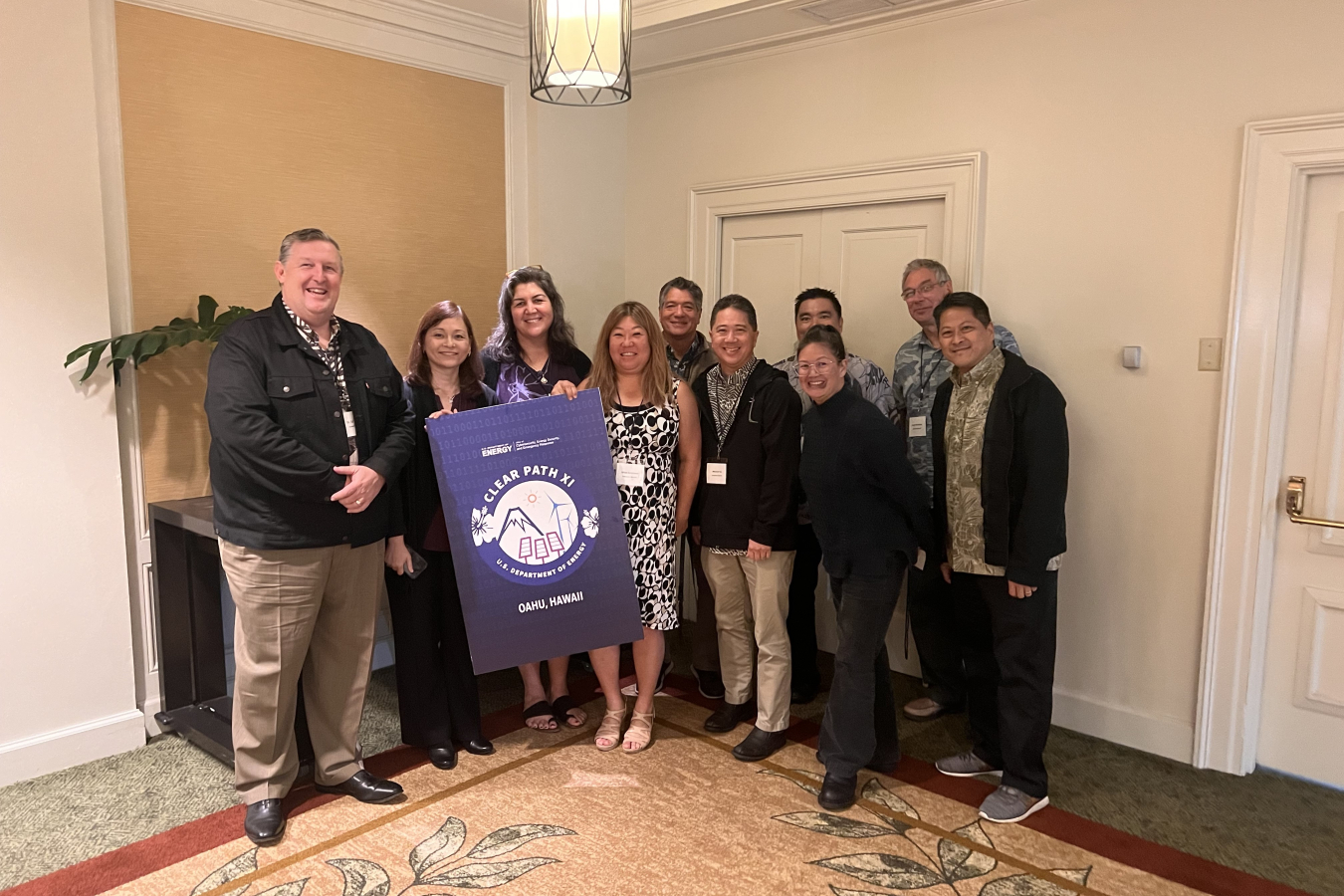As an island state, Hawai’i is uniquely situated when it comes to strategic preparation for energy emergencies. The “tyranny of time and distance” means supply chain considerations are different in Hawai’i than they are in other parts of the United States.
Office of Cybersecurity, Energy Security, and Emergency Response
March 6, 2024As an island state, Hawai’i is uniquely situated when it comes to strategic preparation for energy emergencies. The “tyranny of time and distance” means supply chain considerations are different in Hawai’i than they are in other parts of the United States. The equipment and materials needed to support response to and recovery from a natural disaster or other forms of disruption cannot necessarily be flown in and require significant coordination. Planning and preparation for disasters look different when there are very real physical and geographic limitations at play.

Preparing a coordinated disaster response takes practice, which is why the Department of Energy’s (DOE) Office of Cybersecurity, Energy Security, and Emergency Response (CESER) leads exercises like Clear Path with invested energy stakeholders to hone the processes, communications, and tactics that ensure communities can access energy safely during an emergency.
Clear Path is DOE’s annual flagship all-hazards preparedness exercise, which brings together energy sector stakeholders to enhance policies and procedures, identify areas for collective improvement, and strengthen relationships and cooperation between industry and government partners. During these exercises, participants can:
- Review and enhance federal, state, and industry procedures and responsibilities to ensure energy sector continuity during response and recovery operations after a cyber incident
- Examine and refine the use of social media in critical communication messaging to the public
- Understand and operate alternative communications and information sharing processes to ensure functionality during a real-world incident
In January 2024, the eleventh iteration of Clear Path took place in Hawai’i. Over 40 organizations took part in this multi-day discussion-based exercise to address a fictitious but realistic emergency scenario: a strong Pacific hurricane in conjunction with a severe and opportunistic cyberattack on Hawai’i’s critical infrastructure.
Brian Marko, CESER’s Clear Path XI Exercise Director, facilitated the two-day exercise and sat down for a Q&A about the experience; read on to learn more about CESER’s efforts to support resiliency and preparedness across the energy sector.

The scenarios presented in Clear Path exercises change each year; what makes this year’s exercise unique and important?
Clear Path XI presented a complex, multi-hazard incident impacting the energy supply and security in Hawai’i. That’s important for a few reasons:
- It offered an opportunity to emphasize the importance of cybersecurity for renewable energy assets and distributed energy resources in Hawai’i. Participants could focus on island response and preparedness and strengthen cyber preparedness in the State and throughout the Pacific islands.
- Given Hawai’i’s geographical location, Clear Path XI provided a new understanding of the unique energy sector challenges when responding to complex catastrophic incidents impacting energy sector security, cybersecurity, climate adaptation, resilience, logistics and supply chain integrity.
- It reaffirmed DOE’s commitment to supporting the people of Hawai’i by establishing enduring relationships with key energy industry, state, and federal partners. Following the visit of U.S. Energy Secretary Jennifer Granholm to Maui in September 2023 after the devastating wildfires, CESER was one of several DOE offices directed to assess the State’s energy recovery needs. Since then, CESER staff have collaborated on these efforts with the Hawai’i State Energy Office and other local stakeholders. The Clear Path XI exercise also supports national security priorities to harden infrastructure supplying energy to critical defense facilities, as Hawai’i hosts the headquarters for U.S. Indo-Pacific Command.
What are the biggest takeaways after Clear Path XI?
The biggest takeaways from the CESER perspective of Clear Path XI are the need for continued prioritization of:
- Development and strengthening of public-private sector relationships to ensure priorities and resources are synchronized before, during and after incidents.
- Better understanding of state resource constraints and the prioritization of logistics and supply chain in the event of a catastrophic hurricane.
- Establishing clarity of information sharing between all critical partners following a significant cyberattack.

How will the lessons learned from participating in a Clear Path exercise help improve energy security and resilience?
Clear Path exercises may provide a hyper-focused look at a region or state’s energy risk profile. However, many of the findings highlight common issues found across the country to include resilient communications, coordination and release of public information, information sharing across public and private sectors, common operating picture sharing, and resource prioritization.
What does CESER have in mind for future Clear Path exercises?
This exercise continued to reaffirm the importance of Clear Path and its focus on the establishment of relationships between key energy partners, the states, and regional federal partners. While we have a variety of criteria we use in prioritizing and designing exercises, this is the most important. We always find that one of the most valuable findings in exercises is the relationship building that occurs prior to, during and after the event. This is critical when a real-world incident occurs; the collaboration becomes easier as the partners are familiar with each other, and the response priorities and objectives are understood.
Through Clear Path, CESER will continue to explore multi-hazard exercises as the energy sector continues to demonstrate the need for realistic scenarios that push the boundaries and present challenging response and restoration situations.
For more information about Clear Path and DOE’s other preparedness exercises, visit CESER’s Exercise and Training Library.

